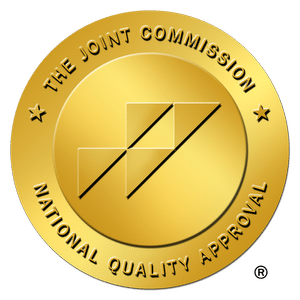ART Therapy is a newer form of psychotherapy drawn from the earlier and more well-established EMDR Therapy. Both use eye movements to reprocess information as a central part of the work. Understanding the differences between them can assist in deciding which to choose. In some settings both are used with ART considered as “EMDR on steroids” In this article I explain what each is, provide a comparison between them and some guidelines for choosing between them.
The Basics of ART Therapy
Accelerated Resolution Therapy is a form of psychotherapy which uses back-and-forth eye movements that have a calming and relaxing effect on the client. These movements are combined with a technique called Voluntary Memory/Image Replacement. The therapist guides the patient through the process without getting heavily involved in the patient’s psychic work.
The therapist directs the patient to visualize a distressing event or representative metaphor. The therapist helps the patient process their bodily sensations. The patient is not required to talk about their own material which offers safety and relief compared to other trauma-informed techniques.
The patient is then directed to rescript their distressing images and memories. This reprograms how they are stored in the brain so they no longer trigger strong physical and emotional reactions in the body [1].
With its origins in EMDR (Eye Movement Desensitization and Reprocessing) therapy and several other therapeutic approaches, ART extends this in different ways with its own processes and set of practices. The Substance Abuse and Mental Health Services Administration (SAMHSA) named ART an effective psychotherapy for posttraumatic stress (PTSD), depression and personal resilience. ART has also been classified as a promising therapy for a variety of other conditions as well.
ART has 3 phases of treatment, typically over a few weeks:
Phase 1: Assessment, history and understanding the client’s problem and symptoms. 1-3 sessions
Phase 2: Treatment with the ART Protocol of back and forth eye movements and Voluntary Image Replacement. The therapist guides movement from painful places towards growth and positive changes. Traumas and difficult life experiences will no longer trigger strong emotional or physical reactions. Clients do not have to talk about these if they wish. 1-5 sessions.
Phase 3: Follow-up to review what changes have occurred and what other areas might benefit from being worked on.
What is EMDR?
EMDR (Eye Movement Desensitization and Reprocessing) was originally developed as a treatment for Post-Traumatic Stress Disorder. It has since branched out to treat a variety of applications including: phobias, test anxiety, dermatological disorders and pain management. It is based on the concept that certain eye movements reduce the intensity of negative emotions such as in trauma.
The goal of EMDR is to facilitate accelerated information processing. It is based on the assumption that we all have a natural ability to heal. The aim is to leave a client with the emotions, understanding and perspectives that will lead to healthy and useful behaviors and interactions. ”Processing” an experience doesn’t mean talking about it. It means to make sense of it and no longer be disturbed by it.
It is a highly structured treatment with eight phases. All phases contribute to the effect although not all eight are used in each session. Each session lasts 60-90 minutes and it can take one or several sessions or much longer, depending on the client, to process one traumatic experience.
ART vs EMDR: A Back to Back Comparison
| ART Therapy | EMDR Therapy | |
| Goal | To replace/rescript disturbing images with positive ones. | To facilitate accelerated information processing. Aims to reprocess traumatic events |
| Aim | To help people find relief from past trauma through the use of eye movements, in just a few sessions | To leave a client with the emotions, understanding and perspectives that will lead to healthy and useful behaviors and interactions |
| Duration | Brief | Brief |
| # of Sessions | A few (average 3.7) | Small but more than ART (5-15) |
| Initial Therapeutic focus | PTSD, depression, personal resilience | PTSD |
| Secondary focus | Phobia, panic, anxiety, sleep and wake disorders, disruptive and antisocial behaviors, general functioning and well-being | Phobias, test anxiety, dermatological disorders and pain management |
| Process | 3 phases | 8 phases |
| Core Technique | Visualize the trauma scene twice..Desensitize the negative sensations and emotions, “positize” images via voluntary image replacement (rescripting) | Focus on an image, negative emotion, and negative cognition/belief about the trauma that evokes a negative reaction while simultaneously making eye movements, sounds or taps using bilateral stimulation. |
| Therapist Style | Directive | Non-directive |
| Key Clinical Elements | Exposure, cognitive restructuring, relaxation skills training, psychoeducation, narration, organization of memories, and explicit targeting of negative emotions | The Adaptive Information Processing model is the core theory. The 8 Phases of EMDR Therapy. The Protocols. The Procedures. Dual Attention Bilateral Stimulation. Clinical Interventions. The Therapeutic Relationship. |
| Narration Required | No patient narration of traumatic event required | No patient narration of traumatic event required |
| Homework Required | No | No |
| Key Uniqueness | Voluntary Memory/Voluntary Image Replacement is a form of re-scripting More directive; easier to learn than EMDR Broad flexibility of use with a variety of conditions. Same therapist not required in each session | First to innovate with brief “eye movement-based” therapy Processing of inadequately processed and maladaptively encoded memories remains the primary focus of EMDR Therapy. A number of specialized protocols have been developed to address the needs of different clients suffering from a variety of disorders |
| Cost | Highly cost-effective | Low cost but more than ART |
| Key Limitation | Few evidence-based studies of effectiveness [2] | More complex and longer to administer than ART |
| Key Differences | ART was developed based on experience with and a critique of EMDR. So there are many differences in how sessions are conducted. [3] | First approach of this type. Has far more trained therapists.Has more evidence-based research validating this approach |
ART Therapy and Other Forms of Therapy
ART therapy is one of the newest approaches to psychotherapy. As such it is the least studied to date although there is growing interest in it among practitioners, given the rapid, effective results it has offered.
ART is viewed as containing the clinical elements to be most critical for effective trauma-focused therapy, including exposure, cognitive restructuring, relaxation skills training, psychoeducation, narration, organization of memories, and explicit targeting of negative emotions [1].
Wait et al note “What makes ART especially unique, however, is that ART also has the flexibility to effectively target the entire spectrum of clinical symptoms seen in PTSD, as well as {many} other psychiatric conditions. Due to a growing recognition in the neuroscience community suggesting that different neurologic pathways contribute to different “types” of PTSD, ART is a versatile and adaptable therapy that has significant clinical value.”
How to Know Which One to Choose
ART is certainly promising (15 years) while EMDR is more well-established (30 years). The primary factors governing which approach to choose are:
- Confidence in the approach, given that there is still little research published on ART
- Referral by another therapist recommending ART.
- Availability of practitioners
- Duration of therapy

Sources
[1] Waits, W., Marumoto, M. & Weaver, J.2017. Accelerated Resolution Therapy (ART): a Review and Research to Date. Curr Psychiatry Rep 19, 18 (2017).
[2] Howe EG, Rosenzweig L, Shuman A. 2018. Ethical Reflections on Offering Patients Accelerated Resolution Therapy (ART). Innov Clin Neurosci. 2018 Aug 1;15(7-8):32-34.
[3] Rosenzweig L. nd. DIFFERENCES BETWEEN EMDR AND ART.
Hase M. The Structure of EMDR Therapy: A Guide for the Therapist. Front. Psychol., 24 May 2021. Sec. Psychology for Clinical Settings. Volume 12 – 2021.












